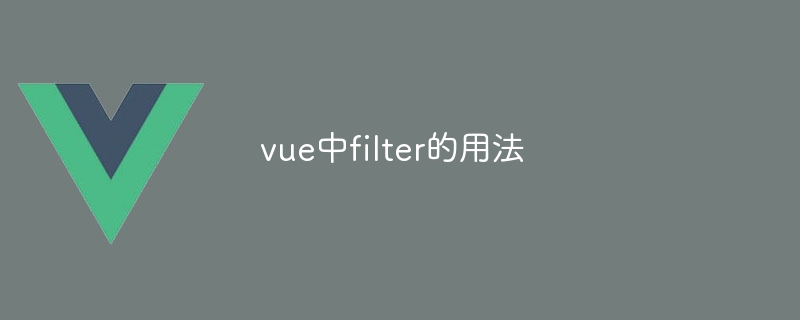Home >Web Front-end >Vue.js >How to use filter in vue
How to use filter in vue
- 下次还敢Original
- 2024-04-27 23:36:47733browse
Filter is a Vue.js tool for formatting and transforming data and can be applied to strings, arrays, and objects. Common filters include uppercase (uppercase), lowercase (lowercase) and date (date). Custom filters can be registered through Vue.filter(). Filters can be chained together to implement complex transformations, but the performance impact when working with large amounts of data should be considered.

Usage of filter in Vue.js
Filter is a kind of filter in Vue.js Powerful tools for formatting and converting data. They can be applied to strings, arrays, and objects to enhance the readability and presentation of data.
Using filters
Using filters in Vue.js is very simple. Just specify the filter name within double curly braces and pass in the value you want to filter. The value is:
<code class="html">{{ value | filterName }}</code>
Common filters
Vue.js has many built-in common filters, including:
-
uppercase: Convert the value to uppercase -
lowercase: Convert the value to lowercase -
capitalize: Convert the first letter of the value Uppercase -
currency: Format the value as currency format -
date: Format the value as a date string
Custom filter
You can also create your own custom filter and register it through the Vue.filter() method:
<code class="javascript">Vue.filter('customFilter', value => {
// 自定义过滤逻辑
return modifiedValue;
});</code>
Filter Chain
Filters can be chained together to achieve more complex transformations. For example, the following filter chain converts values to uppercase and then adds a prefix:
<code class="html">{{ value | uppercase | prepend('Prefix:') }}</code>
Performance considerations
When using filters on large amounts of data, you should consider their performance Influence. If your filter requires complex operations, you may consider using computed properties or methods to avoid repeated calculations for each render.
Example
The following example shows a filter that converts an array into a comma-separated string:
HTML:
<code class="html"><p>{{ ['a', 'b', 'c'] | join(',') }}</p></code>
Output:
<code>a,b,c</code>
The above is the detailed content of How to use filter in vue. For more information, please follow other related articles on the PHP Chinese website!

